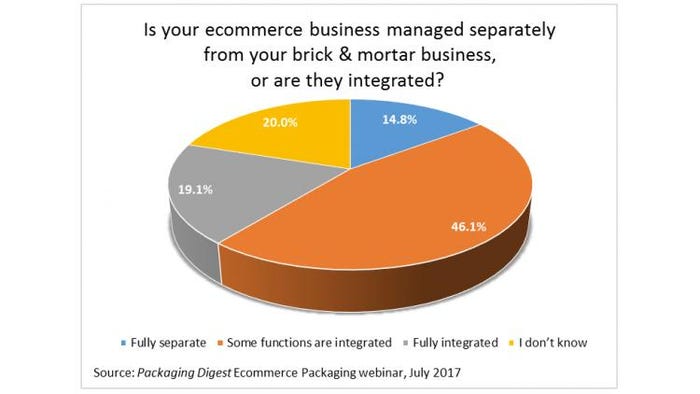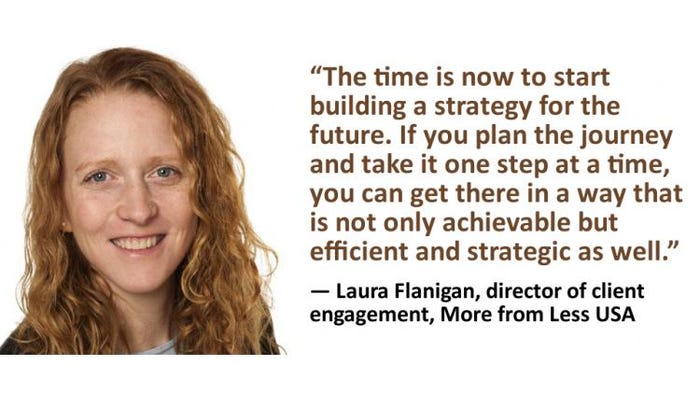What best practices for ecommerce packaging are emerging?
Is there a standard transit test packaging departments are using for their ecommerce shipments? Are most companies integrating their growing ecommerce enterprise with their brick-and-mortar business? Finally, some answers.
Packaging Digest asked attendees to our July 18, 2017, webinar “Ecommerce Packaging: A Step-by-Step Guide to Getting it Right from the Start” these two questions to get a sense of where the industry is at this point.
Regarding transit packaging tests, no clear winner emerged. By a narrow margin (less than a full percentage point), 30.5% of poll takers say they are not currently testing their transit packaging—makes me wonder what their damage rates are. Nearly 30% of respondents chose the ISTA 3a test from the Intl. Safe Transit Assn., with almost 23% saying they use the ISTA 6 standard, which is the protocol used by Amazon. A bit more than 17% are using some other test, perhaps a proprietary one. This question had 128 people responding.

Regarding business integration, the majority of respondents (65.2%) either partially or fully integrate ecommerce into their core business. Does it surprise you that it’s that high?
Less than half (46.1%) integrate some functions their ecommerce and traditional retail distribution operations. Nearly one-fifth (19.1%) are fully integrated. Just less than 15% of respondents tell us ecommerce business is totally separate. Another one-fifth don’t know. A total of 115 people answered this poll question.

4 steps to efficient ecommerce packaging
Webinar presenter Laura Flanigan, director of client engagement for More from Less USA, shared a lot of data and advice. She summarizes:
“It is clear change is coming—retail as we know it will never be the same. This change will affect your packaging because ecommerce distribution simply requires different approaches to packaging in terms of the number of touch points, brand engagement and the function of the package.
“The time is now to start building a strategy for the future. If you plan the journey and take it one step at a time, you can get there in a way that is not only achievable but efficient and strategic as well.”
Her steps to doing it efficiently:
1. Take stock of your current reality in terms of how product moves through your supply chain inbound, outbound, in the warehouse and for returns.
2. Make sure you know how to measure your performance, and understand where your business is growing in terms of ecommerce.
3. Then, develop a plan with time-bound milestones, category by category, for what you’ll try to achieve this year and in the future.
4. Next, plan with measurable clarity—and execute, execute, execute. The goal here is to minimize ad hoc or reactive design changes—being proactive will save you money, even if you decide to wait to address certain issues.
Flanigan concludes with, “There is no silver bullet for how and when to move to an ecommerce or omni-channel package. You may decide there are some issues you cannot, or choose not to, tackle with respect to optimal ecommerce packaging. The goal with this effort is to outline and understand those issues so you are making informed decisions about how they impact your business.”
You can view the nearly 1-hour webinar, including the then-live Q&A, on-demand by clicking here.

****************************************************************************************
Learn about the latest developments in ecommerce packaging at MinnPack 2017 (Nov. 8-9; Minneapolis). Register today!
About the Author(s)
You May Also Like




